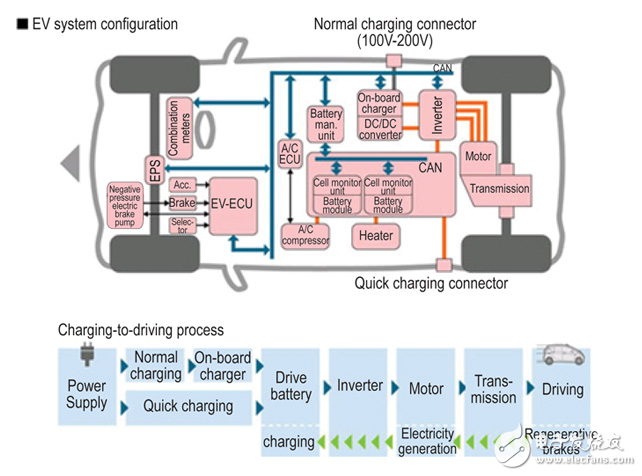
资料下载

CAN总线:以电动汽车和PHEVs发挥更大的作用
CAN总线:以电动汽车和PHEVs发挥更大的作用
CAN总线技术在协调在今天的化石智能子系统的几十个已经发挥了关键的作用为燃料的汽车和卡车,但他们将更为重要,明天的电动汽车(EV)成功,插入式混合动力电动汽车(PHEV),和其他节能的运输系统。功能要求的汽车电池,充电系统和电动传动系统的实施,提出了新的挑战,对CAN总线技术(图1)和设计师谁使用它。本文将研究这些挑战,并看看下一代的CAN总线产品的出现,以满足他们。

图1:大多数混合动力和电动汽车将依靠CAN总线连接电池,能量管理和动力元件为敏感,集成系统。(三菱工业提供)
New applications for a mature technology
Introduced by Bosch in the mid-1980s for in-vehicle communications, the Controller Area Network bus (CAN bus) is a standard that allows microcontrollers and other devices to communicate with each other within a vehicle (or other network) without a host processor. Its robust differential signals are carried on small-gauge twisted-pair cabling that is much lighter and less costly than the bulky wiring harnesses it usually replaces. CAN bus’s low cost and high reliability helped make it the de facto control interface for the growing number of digitally-controlled powertrain, body electronics, safety and “infotainment” subsystems in conventional vehicles. Now, it will take on new roles in the battery management systems (BMS), battery charging (regenerative and plug-in modes), motor drive controllers, inverters, and the multiple DC/DC converters used in both EVs and PHEVs.
声明:本文内容及配图由入驻作者撰写或者入驻合作网站授权转载。文章观点仅代表作者本人,不代表电子发烧友网立场。文章及其配图仅供工程师学习之用,如有内容侵权或者其他违规问题,请联系本站处理。 举报投诉
- 相关下载
- 相关文章





